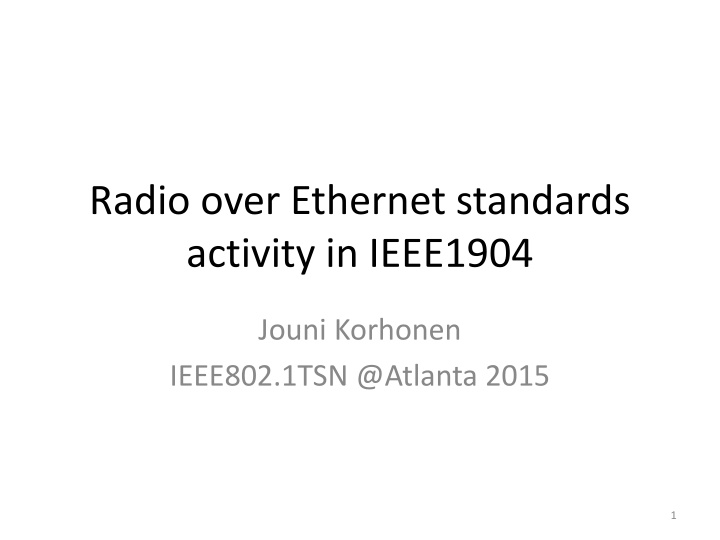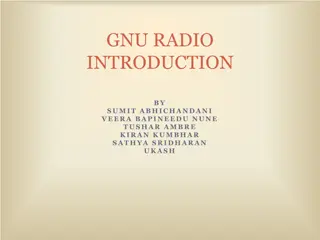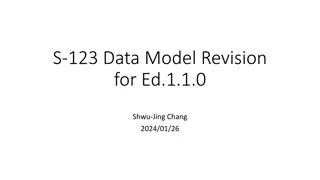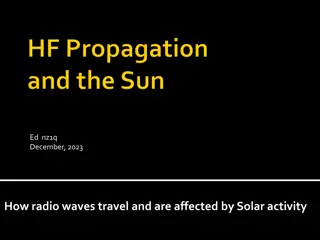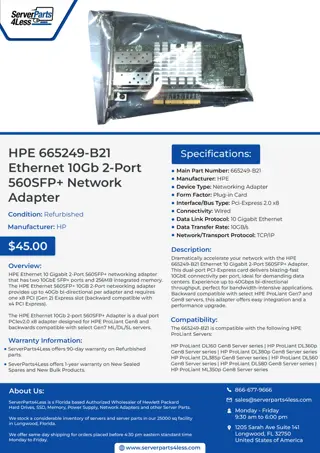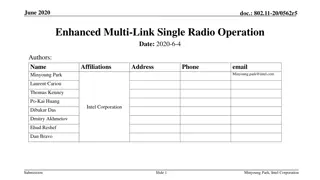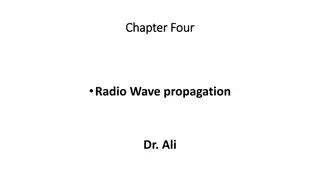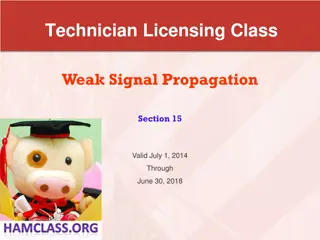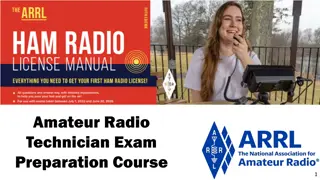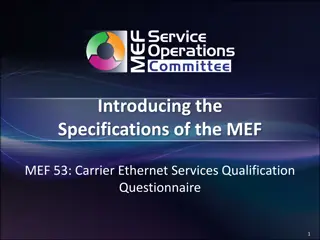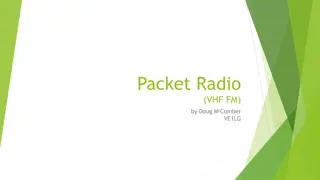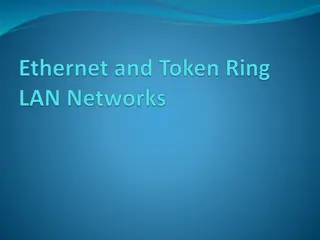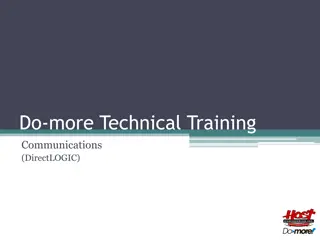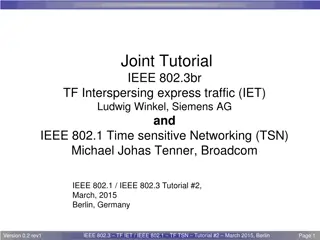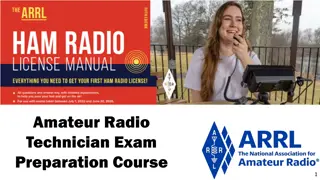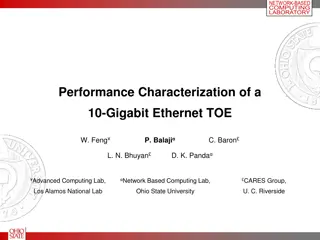Standards Development for Radio over Ethernet in IEEE1904
Explore the ongoing standards development for Radio over Ethernet in IEEE1904, including the PAR submission, approval process, and key objectives such as encapsulation and mappers. Learn about the RoE encapsulation overview, PAR content, what's not part of the PAR, and more regarding this cutting-edge technology.
Uploaded on Sep 16, 2024 | 3 Views
Download Presentation

Please find below an Image/Link to download the presentation.
The content on the website is provided AS IS for your information and personal use only. It may not be sold, licensed, or shared on other websites without obtaining consent from the author.If you encounter any issues during the download, it is possible that the publisher has removed the file from their server.
You are allowed to download the files provided on this website for personal or commercial use, subject to the condition that they are used lawfully. All files are the property of their respective owners.
The content on the website is provided AS IS for your information and personal use only. It may not be sold, licensed, or shared on other websites without obtaining consent from the author.
E N D
Presentation Transcript
Radio over Ethernet standards activity in IEEE1904 Jouni Korhonen IEEE802.1TSN @Atlanta 2015 1
Disclaimer This is not an official IEEE1904 WG output; just an informal update what is happening regarding Radio over Ethernet in IEEE1904. 2
What, when and where.. What: Standards development for Radio over Ethernet (RoE) encapsulation and mappers. When: PAR form submitted to NesCom in 19-Nov-2014. PAR approved by SASB in Dec 2014. First f2f meeting on week 6 in Feb 2015. Where: Sponsored by IEEE ComSoc/SDB. Hosted by IEEE 1904 ANWG as a 1904.3 TF. IEEE 1904.3 is individual project and anyone can join. 3
PAR content in a nutshell 1. The encapsulation of digitized radio payload (e.g. IQ data), possible vendor specific, management and control data channels/flows into an encapsulating Ethernet frame payload field: -> define a Native RoE Encapsulation Transport Format. 2. The header format for both structure-aware and structure-agnostic encapsulation transport formats. The structure-aware encapsulation has detailed knowledge of the encapsulated digitized radio transport format content. The structure-agnostic encapsulation is only a container for the encapsulated alien digitized radio transport frames: -> allow also alien format encapsulation and transport. 3. A structure-aware mapper for CPRI and payloads to/from Ethernet encapsulated frames. The structure-aware encapsulation is not restricted to current CPRI other mappers are possible: -> define a CPRI to Native RoE Format mapper. (the mapper cannot obviously map any reserved and stuffing bits if those are used to carry meaningful data.. ) 4
What is not part of the PAR No changes to Ethernet Packet format No changes to MAC No normative queuing, timing and synchronization definitions.. Only ensure that: Desired RoE traffic fits into the available link capacity with the encapsulation overhead. Desired RoE traffic (structure aware or agnostic flows) have a realistic chance to meet their respective timing requirements. 5
RoE encapsulation overview Ethernet packet remains unchanged PAR scope Ethernet Frame Reserve EthType(s) Preamble + SFD MAC DA MAC SA EthType Payload >= 64 octets FCS Inter Packet GAP No change to Ethernet packet format Implementation / Operational Clarifications (only when necessary) Define RoE encapsulation 6
RoE Encapsulation Alternatives: Structure Agnostic Encapsulation Ethernet Frame OBSAI frame(s) OBSAI frame(s) OBSAI frame(s) unchanged Preamble + SFD MAC DA MAC SA EthType RoE Header -> Length, Type = structure agnostic, etc Ethernet frame payload OBSAI frame(s) OBSAI frame(s) CPRI frame(s) unchanged RoE Payload FCS Inter Packet GAP OBSAI frame(s) OBSAI frame(s) XYZ format frame(s) unchanged 7
RoE Encapsulation Alternatives: RoE Structure Aware Encapsulation Ethernet Frame Preamble + SFD MAC DA MAC SA EthType Transport of mixture of Antenna Carriers e.g., OBSAI frame(s) OBSAI frame(s) IQ data (LTE, 3G, 2G, ..) Can be unmodified, preprocessed, compressed, .. RoE Header -> Length, Flow ID, Flow Type = IQ/ vsd/ctrl/C&M/etc, Sample size, etc Ethernet frame payload OBSAI frame(s) OBSAI frame(s) only transport, content opaque) Other flows (provide RoE Payload FCS Inter Packet GAP i.e. the Native RoE Format
Q & A More data available: http://www.ieee1904.org/3/index.shtml 9
